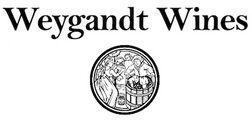
Friend and Foe: Weather and the 2021 Growing Season
The weather has many personalities, ranging from pleasant to fickle to downright unpleasant. So far, the weather hasn't been feeling very charitable this year, and the 2021 growing season is already going to be one to remember.
The Wine & Spirit Education Trust (WSET) defines weather as “the annual variation that happens relative to the climatic average.” So while the climate doesn’t generally change significantly from year to year, the weather can be far more capricious.
This is especially true for winemakers and other agricultural producers, whose livelihoods are dependent on how the weather feels. For them, the weather can be an unpredictable muse, capable of turning a growing season into one of the best in memory or instead, a series of crisis management exercises.
Moderate changes in the weather from year to year can result in unique characteristics expressed in the wine, also known as vintage variation. But there are a handful of weather events that are a grower’s nightmare, including late-season rains, hail storms, heat spikes, and frost. Not even hallway through the 2021 growing season, growers in Europe were hit with two out of four of these scenarios with devastating intensity.
In March, unseasonably warm temperatures across the continent prompted early bud break on the vines. After a winter of hibernation, warmer weather signals the start of the grape growing cycle. It can take several weeks for the tender new buds to transform into shoots, leaving them vulnerable to adverse weather. With spring temperatures known to be inconsistent, the risk of damage is multiplied when prematurely warm temperatures prompt the vines to bud early.
This is exactly what happened in April, when overnight temperatures in wine growing areas of France, Germany, northern and central Italy, and parts of Spain dropped well below freezing. Sub-zero temperatures were recorded for multiple nights in a row, damaging the fragile buds and their ability to continue growing, all but destroying the promise of an entire harvest.
France was particularly hard hit, where it’s estimated that about 30% of the country’s overall 2021 crop was destroyed, with individual producers reporting much higher levels of damage. If this wasn’t bad enough, some areas also experienced snow. In France’s eastern Jura region, Michel-Henri Ratte of Domaine Ratte told The Guardian that some of his green shoots did survive the initial frost, but the arrival of snow put any chance of a 2021 crop into question.

Other producers in the Weygandt portfolio were also affected, including Richard Leroy in the Loire Valley and Pascal Rollet of Domaine de la Chapelle in Burgundy, who fear that most – if not all – of their 2021 crop was destroyed. It’s possible that a second, smaller crop will appear, but the impact of the frost and the resulting long-term damage to the vines will certainly significantly shrink the 2021 and 2022 vintages.
For small-scale producers, like those in the Weygandt family, the impact of extreme weather events is exponentially magnified. Estates with modest vineyard holdings do not necessarily have other sources of fruit to draw from and depending on the scale of the damage, it’s likely others growers in the region suffered similar consequences. If any extra fruit is available, growers are likely sell to larger producers with more capital.
While unpredictability is a fundamental part of agricultural life, it’s hard to ignore the fact that extreme weather events are now a regular occurrence. This has pressed producers to employ multiple measures to try and protect their harvests, both traditional and modern.
Vineyards illuminated by candles or smudge pots are striking examples of efforts to ward off frost, but producers also use wind machines and even water sprinklers to achieve similar results. Both high and low tech methods are used to protect vulnerable buds from hail. Some estates shoot so-called “hail cannons” into the atmosphere, a type of shockwave generator that is thought to disrupt the formation of hailstones. A more straightforward approach is to cover the vines with nets.
For managing extreme heat, producers might use infrared sensors to monitor which parts of the vineyards are in most need of water, or they might install drip irrigation systems to manually control watering levels. Although all of these measures can be helpful, they can be extremely expensive and time consuming to implement, and are still not a guarantee against damage and loss.
While producers in affected regions are holding out hope for the emergence of a smaller, second crop, 2021 is likely to be one of the smallest harvests in recent memory. Already reeling from the cumulative effects of the Trump administration’s tariffs and lower hospitality sales from the pandemic, European winemakers are bracing themselves for what might come next during this already immensely difficult growing season.
Heading into the summer, the specter of heat spikes remains a concern, as sudden increases in temperature cause the fruit to ripen too quickly, and even turn into raisins. Late season rains can also threaten a successful harvest, diluting the aromas and flavors of the plump grapes, and ultimately dampening the vibrancy of the wine. The likelihood of diseased fruit also increases with rain, as ripe grapes form tight clusters that can trap water, allowing mold and mildew to grow more easily.
Continued support of small producers, especially as they embark on the long path back to recovery, is more critical than ever. As always, the families in the Weygandt portfolio will continue to strive to produce the best products they can, regardless of the circumstances.

